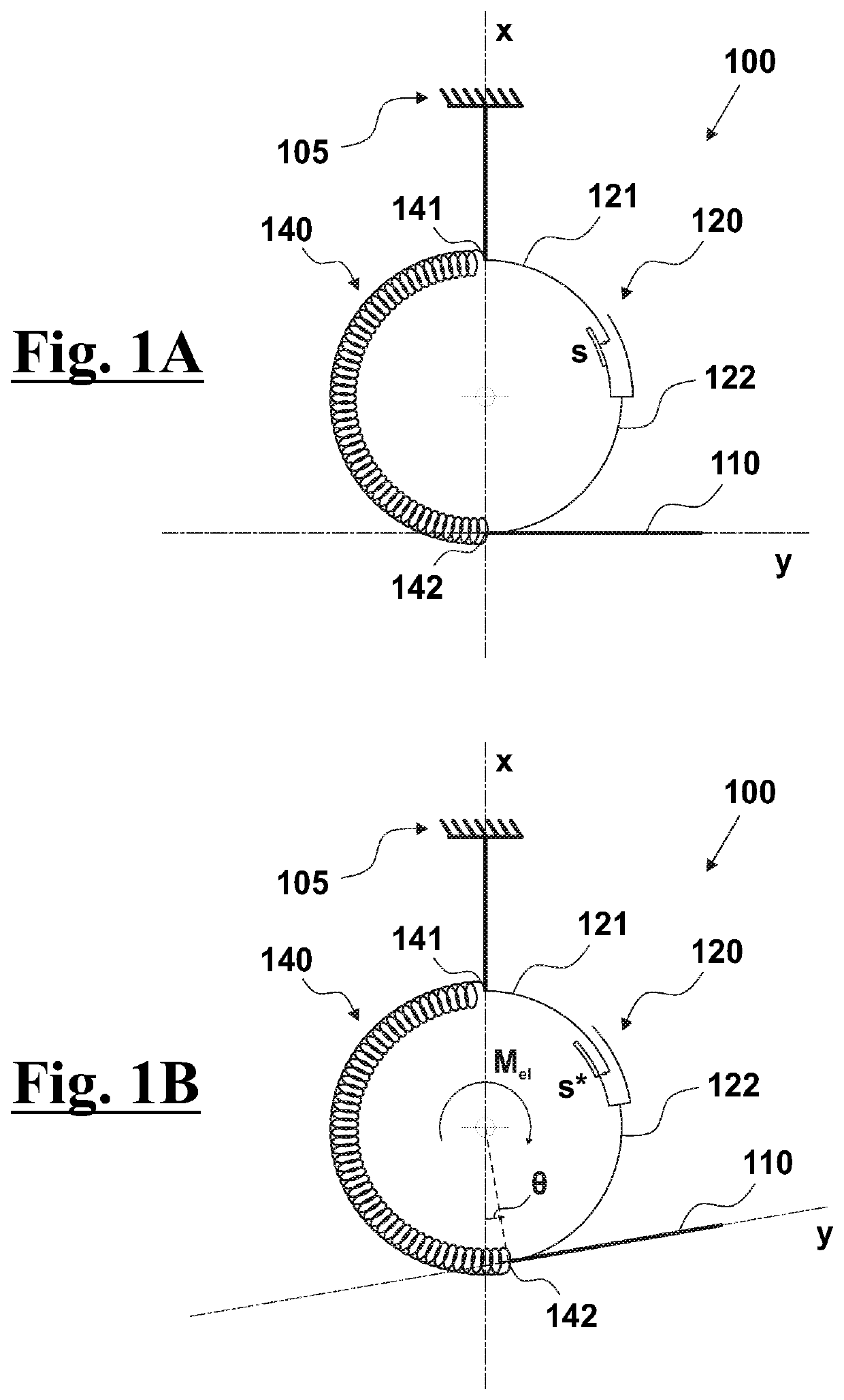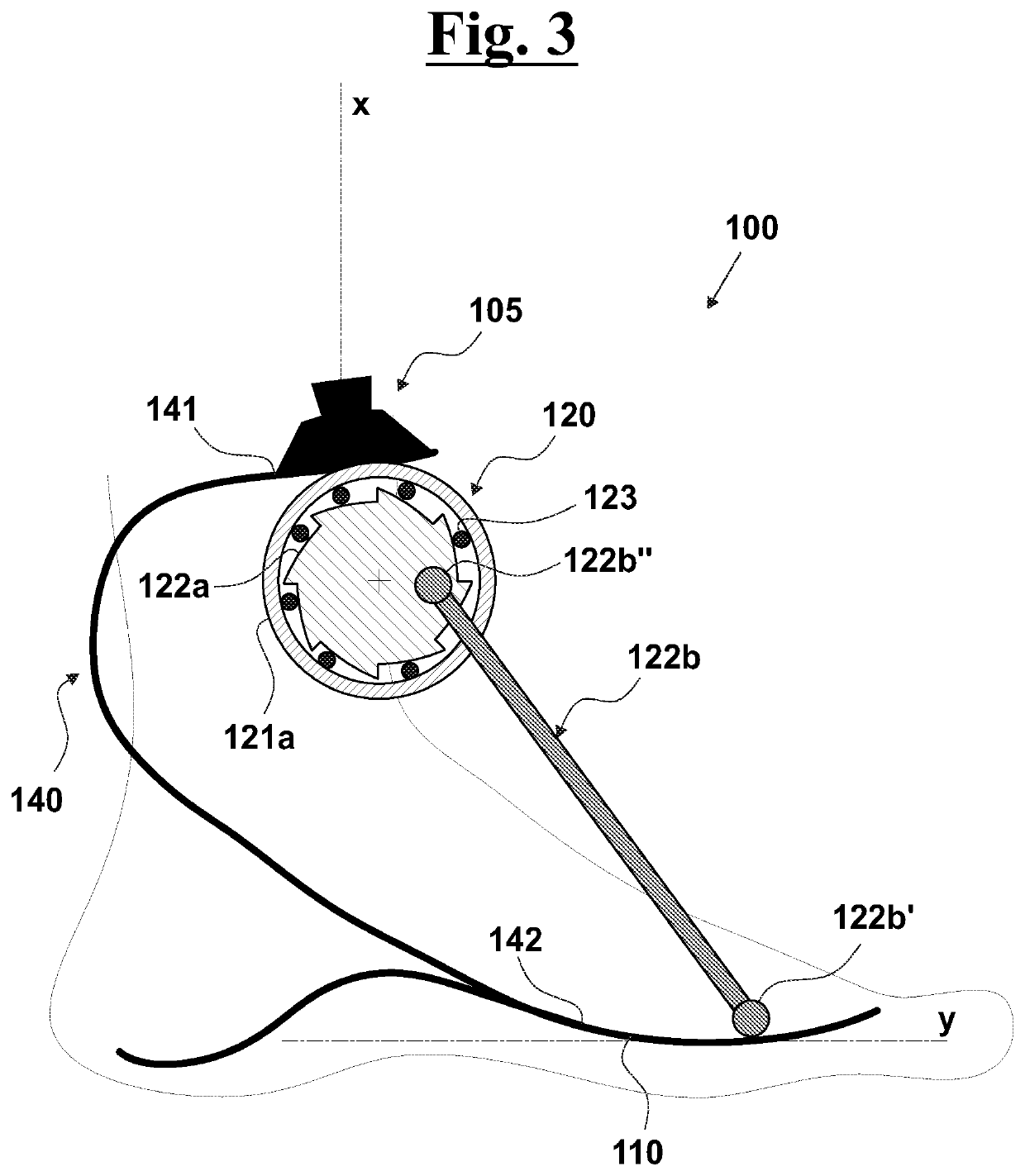Wearable robotic device for moving a user
a robotic device and user technology, applied in the field of wearable robotic devices, can solve the problems of high cost of speed and metabolic consumption, large volume of mechanical and electronic components, and general complexity of active prostheses
- Summary
- Abstract
- Description
- Claims
- Application Information
AI Technical Summary
Benefits of technology
Problems solved by technology
Method used
Image
Examples
Embodiment Construction
[0030]With reference to FIGS. 1A and 1B, the robotic device 100, according to the present invention, comprises an interface frame 105, arranged to connect the robotic device 100 to a lower limb or to a lower limb prosthesis, a lower portion 110 and a resilient element 140 having a first end 141 connected to the interface frame 105 and a second end 142 connected to the lower portion 110.
[0031]Considering an axis x integral to the interface frame 105 and an axis y integral to the lower portion 110, the resilient element 140 can be deformed as a function of an angular variation θ between the axis x and the axis y, as shown in FIG. 1B.
[0032]The robotic device 100 also comprises a switching device 120 comprising a first element 121, connected to the interface frame 105, and a second element 122, connected to the lower portion 110. In particular, the first and the second element 121,122 are adapted to carry out a relative movement s as a function of the angular variation θ between the axi...
PUM
 Login to View More
Login to View More Abstract
Description
Claims
Application Information
 Login to View More
Login to View More - R&D
- Intellectual Property
- Life Sciences
- Materials
- Tech Scout
- Unparalleled Data Quality
- Higher Quality Content
- 60% Fewer Hallucinations
Browse by: Latest US Patents, China's latest patents, Technical Efficacy Thesaurus, Application Domain, Technology Topic, Popular Technical Reports.
© 2025 PatSnap. All rights reserved.Legal|Privacy policy|Modern Slavery Act Transparency Statement|Sitemap|About US| Contact US: help@patsnap.com



